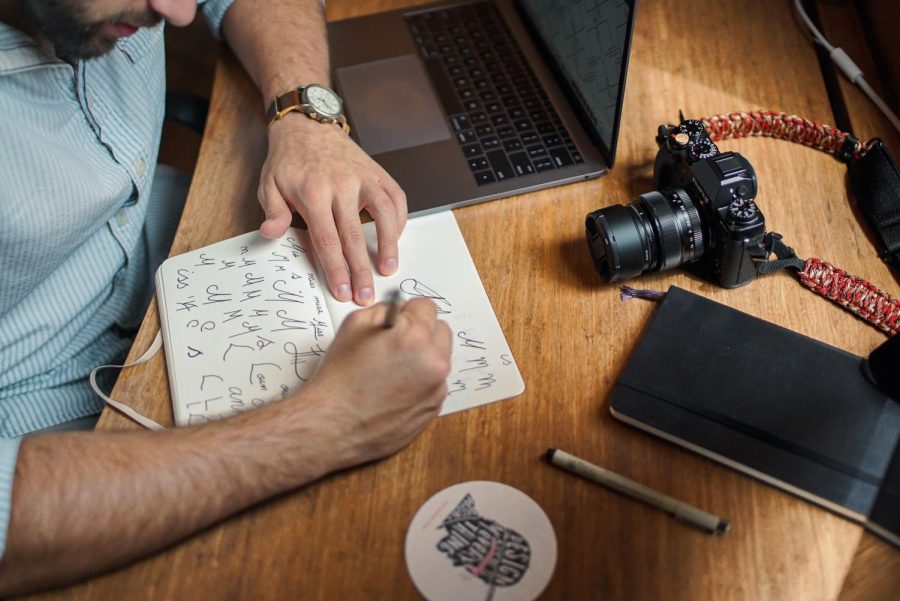On the Death of Annotating by Hand
May 19, 2023
On May 3, 2023, at 7:45 a.m., many Tenafly High School seniors filed into the New Gym as the first group to take the AP Literature exam digitally. The sound of pens scratching on paper was replaced by the thunderous clacking of fingers on keys. Leading up to the exam, many were nervous about not being able to scribble notes in the margins by hand, and navigating the clunkiness of the digital annotation tool. Coming out of the grueling three-hour exam, I can confirm one thing: we need to bring back annotating by hand.
Not everyone agrees with my opinion. Many peers were happy to finish the AP Lit essays faster without having constant hand cramps. Sure, there are positives to digital testing: handwriting can be messy and illegible—it also saves time and energy to type. However, I felt that the shift to a digital platform was indicative of a much larger phenomenon, where students are relying on their laptops more and more for notes and writing essays as opposed to writing them by hand.
For me, the act of putting pen to paper is an engaging process that allows me to form ideas. While it’s a slower process, it forces me to focus on the bigger picture more than technology allows me to. Dina Shlufman (’23) was one senior who mourned the loss of being able to annotate her AP Literature passages by hand. “As a self-proclaimed annotation connoisseur, I believe that highlighting is a dying art,” she said. “In this new age of ChatGPT and online editing, I fear that traditional pen-and-ink note-taking is on a downward trend. Handwritten annotations made your work personal; it made it yours.”
I took great pride in decorating my biology notes with flowers and meticulously drawing diagrams of cells. Since our teacher did not allow laptops for note-taking, being forced to write by hand felt more engaging. During my preparation last year for the AP English Language exam (where we had to write essays in pen), my papers were full of scribbles and scratches. But seeing all of my progress by the end of the essay made it all worth it. “I think students learn better when they have a tactile function with handwriting notes,” Mr. Barrett, history teacher at Tenafly High School, said. “There’s actually research showing that comprehension, understanding, and even in-depth analysis improve when students take notes by hand. I also feel like computers and laptops are more distracting for everyone, especially young people. So it’s hard not to be off-task when you have almost an unlimited amount of distractions at the tip of your fingertips. So the idea of using pen and paper, a physical notebook, taking a test with those kinds of things, improves comprehension, and helps increase focus and attention.”
Moreover, the rise of digital books and e-readers has undoubtedly changed the way we consume books. Through e-readers like Kindle, readers can have access to thousands of books at their fingertips, without the need to wait for a physical copy to arrive in the mail or make a trip to a bookstore. I worry that the physical sensation of books—their earthy aroma and the sound of turning pages—is slowly being phased out by technology.
In the near future, I can foresee a return to handwriting, and I don’t doubt that paper copies of books will still remain for their aesthetic value. Mr. Millar, the orchestra director, commented on the importance of writing by hand. “I think it’s going to come back because, in your English [and history] classes, you’re going to have to write your essays in class because of ChatGPT. I’ve seen some very intelligent, very accomplished people with the handwriting of a five-year-old.”
Think about the last time you received a handwritten card or letter. Didn’t it feel more personal than an email? There is emotion and personality in handwriting. I’ll take the two hours and 15 minutes of hand-written essays over digital test-taking any day.

















































































































































